Chapter 3
Rebalancing the Regional Education Network
The regional approach
By the 1960s, while Malayan study in Australia was flourishing, there was a strong regional emphasis on education developing at the same time, marked by the establishment, in 1965, of the South East Asian Ministers of Education Organisation (SEAMEO), predating the establishment of ASEAN. Australia shared this vision of regional education cooperation. As Australia's trade and strategic relations with Malaysia—and Southeast Asia more broadly— matured in the 1970s, so too did the style of education partnerships. While the numbers of independently funded students outweighed those studying under Colombo Plan scholarships in Australia, there was the perception of international education as being 'based on the twin pillars of goodwill and development'.16 This dynamic started to shift with the emerging collaborative regional consciousness in the early 1970s.
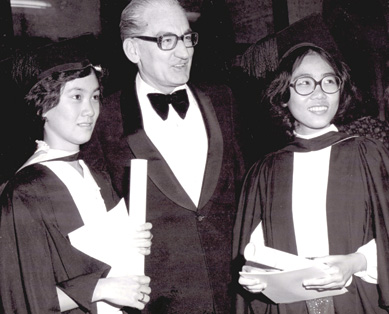
In 1971, SEAMEO approached Australia with a view to expanding its membership and, in 1973, Australia became one of the first countries to be admitted as an Associate Member.17 Today, education is a priority area for the East Asia Summit (EAS) and the ASEAN–Australia–New Zealand Free Trade Agreement (AANZFTA) includes commitments to education under its Specific Services Commitments. For Malaysia and Australia, the education partnership was further expanded under the Malaysia–Australia Free Trade Agreement (MAFTA) which enables Australian service providers to hold 100 per cent ownership in privately funded higher education institutions in Malaysia.
Taking Australian education to Malaysia
The MAFTA outcome highlights another important dimension of the vibrant Australia–Malaysia education relationship–Australian education in Malaysia. Australian university branch campuses in Malaysia, Australian degrees delivered through Malaysian institutional partnerships, together with schools and colleges teaching the Australian curriculum, enable students to get an Australian education without having to travel and live overseas. This concept was pioneered in 1969 with the opening of a Taylor's College, a university preparation programs provider, in Kuala Lumpur offering 'for the first time an Australian program, the Victorian High School Certificate' to 345 students. Taylor's College at its Subang Jaya campus and Sri Hartamas campus continues to serve as a pathway to Australian, as well as a range of other international, universities.18 In 1998 Monash University opened a campus in Kuala Lumpur, followed by the Curtin University campus in Sarawak in 1999, and Swinburne University of Technology, also in Sarawak, in 2000.
The Curtin campus at Miri in the north of Sarawak is the result of a unique and continuing partnership between the university and the State Government of Sarawak that followed a Sarawak approach to Curtin in 1998. At the time, notably, both the Chief and Deputy Chief Ministers and a number of members of the State Cabinet had been former Colombo Plan students in Australia. As well as attending an Australian university campus in Malaysia, there are numerous opportunities for Malaysian students to study for Australian qualifications through local institutions working in partnerships with Australian universities. Students also have the option of pursuing part of their degree in Malaysia and part in Australia.
The Australian Government's support of Australian education in Malaysia is long-standing and was confirmed with the recent announcement of the inaugural Australia–Malaysia 'Towards 2020' scholarships— a five-year program offering undergraduate scholarships for study at an Australian university in Malaysia.
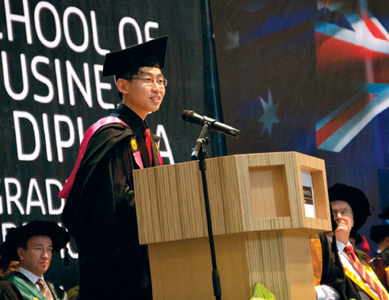
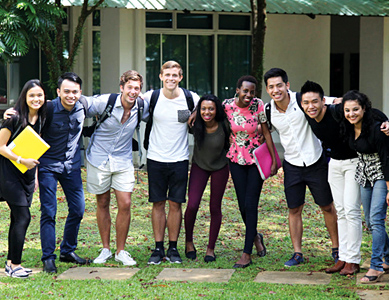
The Colombo Plan legacy
Though the focus of the formal Australia–Malaysian education relationship that began with the Colombo Plan has shifted from education in Australia to that of a regional education, the legacy of the Colombo Plan continues through new reciprocal scholarship initiatives. These include the Malaysia Australia Colombo Plan Commemorative Scholarship scheme. This scheme was initiated in 2012 by The Malaysian Australian Alumni Council (MAAC) to mark the 60th anniversary of the Colombo Plan. The MAAC, founded in 1996 after the Malaysian Australian University Alumni Convention in Kuala Lumpur, is supported by the Australian High Commission in Kuala Lumpur and the Australian Trade Commission (Austrade).
The Colombo Plan also inspired Australia's Foreign Minister, Julie Bishop, to launch a new initiative in 2013, known as the New Colombo Plan (NCP). The vision of the NCP is to transform and deepen connections with our neighbours and, over time, ensure that Australian students make study in the region a priority. The Australian Government has committed A$100 million in funding to the NCP over five years to support both a prestigious scholarship program and a flexible grants program aimed at increasing the numbers of Australian undergraduates studying and undertaking internships in the Indo–Pacific region. The NCP initiative has been warmly welcomed within the region. At the 9th East Asia Summit meeting in Nay Pyi Taw, in 2014, the Chairman noted:
We welcome the Australian Government's New Colombo Plan (NCP) and its expansion to all ASEAN Member States from 2015. The NCP will support increasing two-way student mobility between Australia and the region and contribute to strengthening education collaboration.19
At the launch of the New Colombo Plan in Malaysia in August 2015, Ms Bishop declared:
I want it to be a rite of passage for undergraduates in our universities, the young people who are going to be the leaders of the future, to have an experience of living, studying and working in our region. Coming back to Australia with new perspectives, new ideas, new insights and with friendships and connections that will hopefully last a lifetime.20
In 2016, the program will support over 270 Australian undergraduates to undertake study and internships in Malaysia. The NCP is also supporting new people-to-people and institutional linkages between Australia and Malaysia.
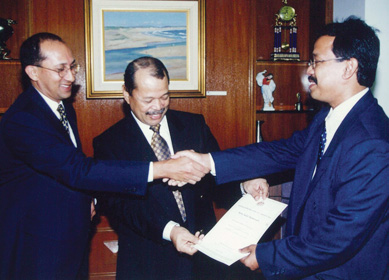
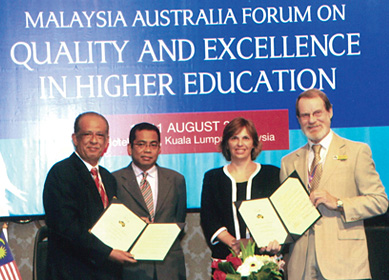
My Story
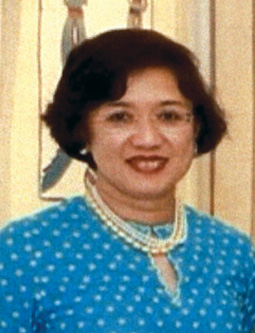
Dean of Medicine University of Malaya
I spent a large part of my early adult life in Australia–15 years to be exact. First in sixth form then as a medical student and finally as a young doctor training to be an infectious diseases specialist. It is no surprise then that Australia and Australians have in many ways shaped me into who I am today.
It was only natural after all those years that many of the good points about the Australian way of life and values rubbed off on me. First and foremost is the eternal sense of optimism–cringe as we may at the greeting "she'll be right, mate", it pretty much sums up the optimistic nature that many Australians possess. Australians are also known for their no nonsense attitude. Coming from Malaysia where things tend to be much more formal and hierarchical, this attitude and that of equality for all is something that I very much admire and appreciate; for instance, a bus driver in Australia is given equal respect to that of a university professor. One ingredient that I also think has contributed to making Australia successful—and often seen to be punching way above its weight in the global arena—is the community spirit, team work, mateship and camaraderie. Australians would often band together as a team and support one another, yet competitively push each other to greater heights.
It is these qualities and more—in addition to the formal education that I received—which I feel have benefited me most after all those years in Australia. I continue to feel a very strong sense of attachment to Australia, not least because I ended up marrying an Aussie, but also for all the opportunities that it continues to afford me. From the recent honour, the Advance Global Alumni Award, that was bestowed upon me by my alma mater Monash University, to the continued engagement through educational and research collaborations that have been forged between my faculty and the various institutions across Australia.